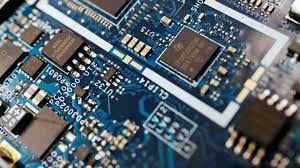PARIS (AFP): France also announced in June that it would invest 2.9 billion euros in a plant run by European multinational STMicroelectronics and the US company GlobalFoundries.
– Is Europe taking sides?
The US has introduced a raft of measures aiming to halt cooperation between US and Chinese firms, and Beijing has hit back with export controls on key materials.
While the EU has called on both sides to relax measures that are ensnaring European companies, the bloc is yet to come up with an organised response.
Instead, individual countries have taken the initiative.
The Netherlands, which has a key position in the sector thanks to equipment maker ASML, said in February it would introduce export controls in September.
The move was widely seen as a way of blocking China, with the Netherlands under pressure from the US.
And Germany blocked the sale of two chip firms to China last year, citing national security concerns.
– Who are the leaders?
From design to manufacture and end-use, the semiconductor industry is truly globalised.
Almost all of the raw materials needed to make the chips – silicon, germanium and gallium – are produced in China.
Taiwan, home to the world’s leading chip manufacturers, accounts for more than half the global output.
Top chip designers like NVIDIA, along with equipment makers like Apple, are US-based.
The Semiconductor Industry Association, a US-based trade body, said US firms accounted for 48 percent of the global industry last year.
South Korea, where Samsung is a world leader, was second with 14 percent, and Europe was in third place with nine percent of the market.







